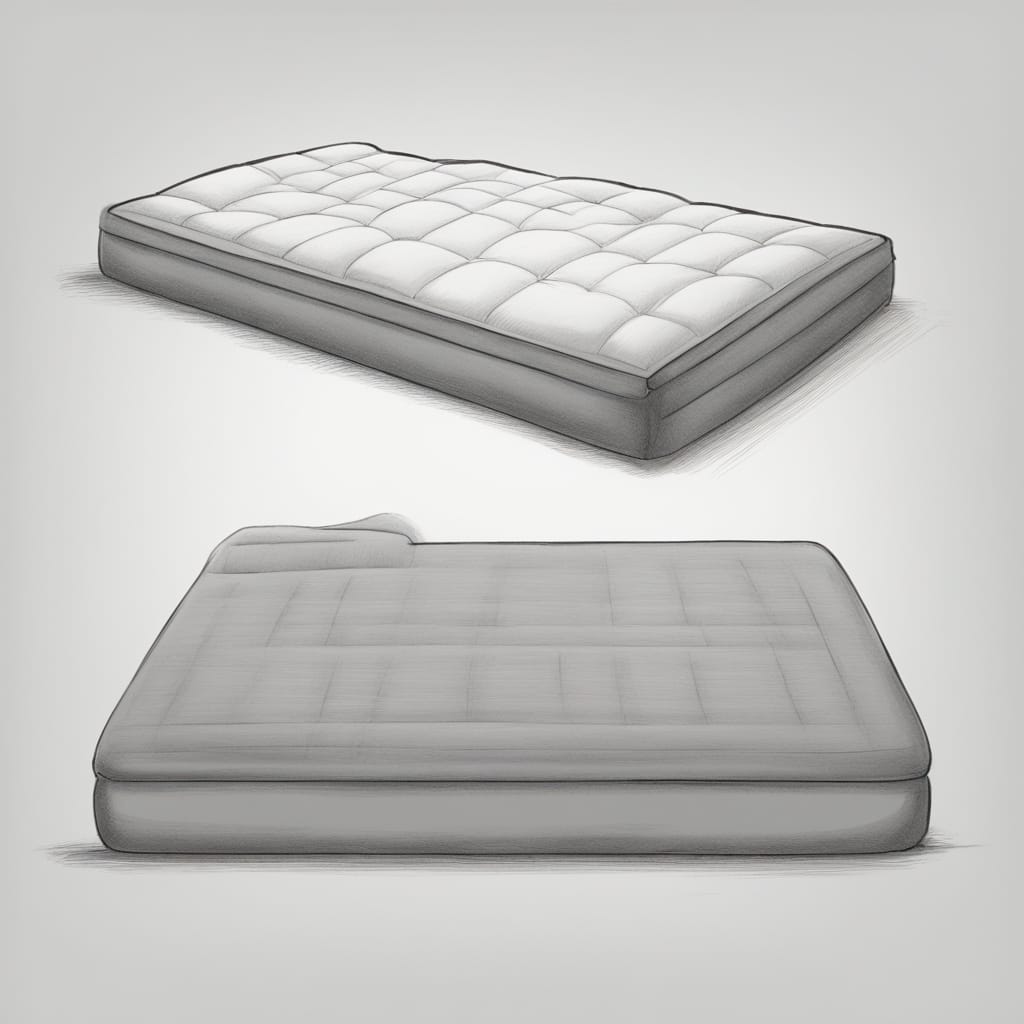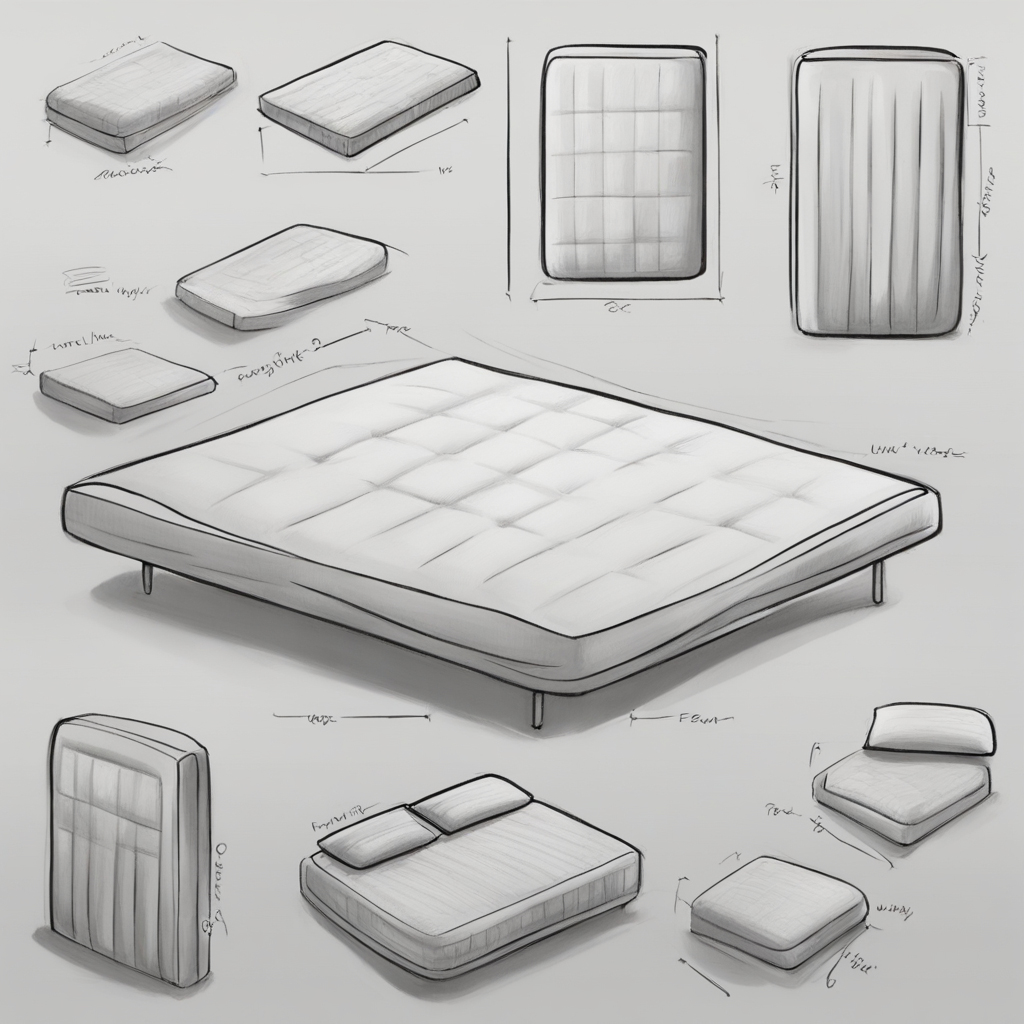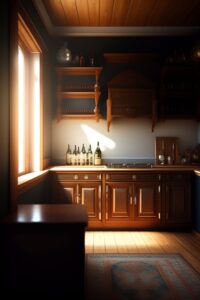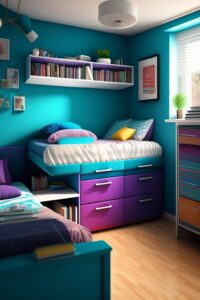A creative and stimulating way to refine one’s artistic abilities is by sketching commonplace objects. Mattresses, despite their apparently ordinary appearance, pose a compelling obstacle by virtue of their distinctive form and texture. We will examine the method for authentically drawing a mattress in this step-by-step guide, enabling you to incorporate an element of coziness into your artwork.
Table of Contents
Materials Required:
Eraser Pencil Paper
An image for reference (optional)
Step 1: Sketch the Mattress Base
Commence by tracing a fundamental rectangular form onto the paper, which will serve as the foundation of the mattress. Assign the rectangle a proportional dimension to the mattress that you intend to illustrate. To ensure lines are straight and even, one may employ a ruler.
Step 2: Add Depth
A mattress lacks absolute flatness. In order to generate depth, draw smaller rectangles within the initial rectangle. Layers of cushioning and foam will be represented by these rectangles to provide the mattress with its comfortable shape. The rectangles’ width and height can be modified in order to simulate distinct layer thicknesses.
Step 3: Create the Pillow Top
Numerous mattresses feature pillow-top construction for additional comfort. Define this characteristic by tracing a curved line from the mattress’s peak. A gradual curve should be applied, emulating the form of the pillow-top. Additionally, remember to apply depth to this layer.
Step 4: Add Texture
The texture of mattresses bears a resemblance to that of embroidery or quilting. Draw a series of small, interconnected curves across the mattress’s surface to replicate this texture. This will create the effect of tufting or embroidery.
Step 5: Refine the Details
Focus on minute details such as the texture pattern and any additional characteristics that your reference image may highlight in order to improve your drawing. Correct any inconsequential lines or make necessary modifications in order to attain a refined aesthetic.
Step 6: Shade and Shadow
Utilize shading and shadowing to impart a more three-dimensional appearance to your mattress. Determine the light source in the scene and darken any naturally shadowed areas of the mattress. This gives the effect of realism and substance.
Step 7: Fine-Tune Your Drawing
Step back and assess your artistic creation. Complete any necessary modifications or enhancements to improve its realism. Incorporate shadows and highlights into your mattress design to render it more inviting and plush.
Step 8: Finalize Your Drawing
After achieving a satisfactory result with your mattress drawing, proceed to emphasize the lines by tracing them with a darker pencil or pen. This is not required, but it can enhance the appearance of your drawing.

FAQs
What are the reasons for learning to design a mattress?
Drawing commonplace items such as mattresses can present an original and demanding opportunity to improve one’s drawing proficiency. It enables the repetition of witnessing and imitating details, shapes, and textures in a variety of forms.
What are the necessary materials to construct a mattress drawing?
A pencil, eraser, paper, and, if available, a reference image are required. Using these fundamental instruments, one can generate an accurate and comprehensive depiction of a mattress.
May I specify the dimensions of the mattress that I intend to sketch?
It is possible to draw a mattress in any desired dimension. The magnitude of your drawing will be determined by the level of intricacy and magnitude of the scale.
What purpose does the mattress drawing serve to have additional depth?
Analogous to point A4, the inclusion of multiple mattress layers in the representation aids in communicating the three-dimensional nature of the object. Including it in your drawing enhances its realism.
In what manner is the pillow-top design executed on the mattress?
Extend a curved line from the top of the mattress to represent a pillow top. Ensure that the curve adheres to the form of a standard pillow-top mattress and is moderate. By drawing smaller rectangles within this layer, depth can be added.
How do I depict the texture of a mattress, which is question number six?
A mattress’s texture frequently resembles that of embroidery or quilting. Draw this by connecting a series of minor curves across the mattress’s surface. This replicates the pattern of embroidery or tufting.
What ways can I enhance the three-dimensional appearance of my mattress drawing?
Use shading and shadowing to impart a three-dimensional effect to your drawing. Determine the light source in the scene and darken any naturally shadowed areas of the mattress.
Should a darker pencil or pen be used to trace over the lines?
It is not required to trace the lines with a darker pen or pencil. It can transform your drawing into a more polished appearance. It depends on your individual preferences and sense of style.
Further, how can I enhance my proficiency in drawing mattresses?
The key to improvement is practice. Examine mattresses of various shapes, materials, and dimensions in order to hone your abilities. Additionally, one may delve into digital tools to create more sophisticated renditions.
Can these techniques be utilized to illustrate other commonplace objects?
Undoubtedly! By imparting observational skills and broadening one’s artistic repertoire, the methodologies acquired through the process of drawing a mattress can be extrapolated to various mundane objects.
Conclusion
In conclusion, while depicting a mattress might appear to be an unorthodox artistic pursuit, it truly serves as an excellent opportunity to hone skills related to observation, texture analysis, and meticulousness. An intriguing addition to an artist portfolio, a realistic mattress illustration can be produced using the appropriate techniques. So, assemble your materials, adhere to this sequential manual, and commence the endeavor of creating an artistic rendition of a cozy and lifelike mattress. Have fun creating!
Check out this super fun and simple guide on drawing an envelope with a step-by-step tutorial! This guide offers simple steps, ensuring that little creators have fun improving their drawing abilities while making this common object!





